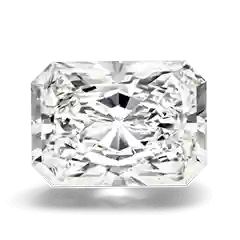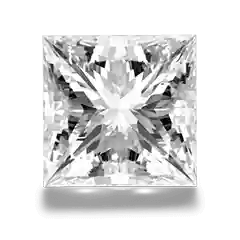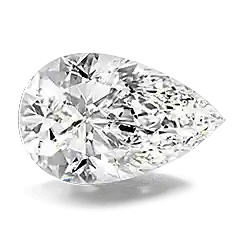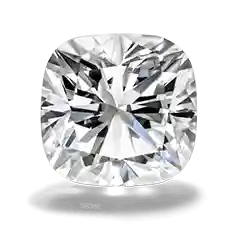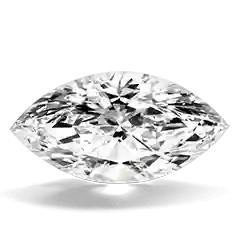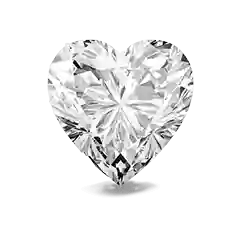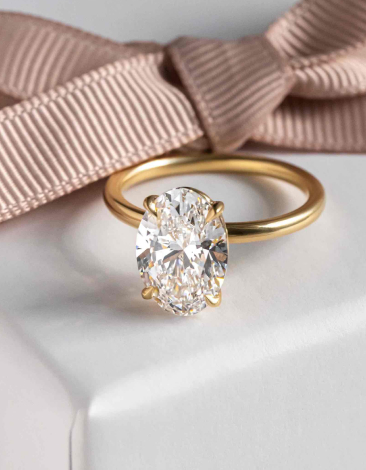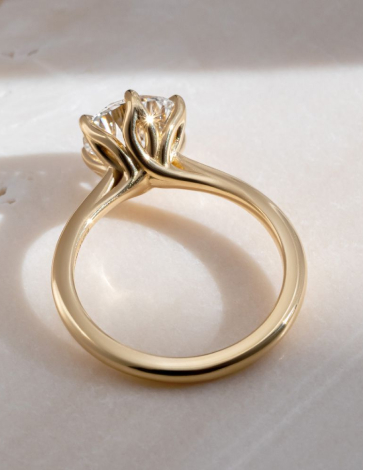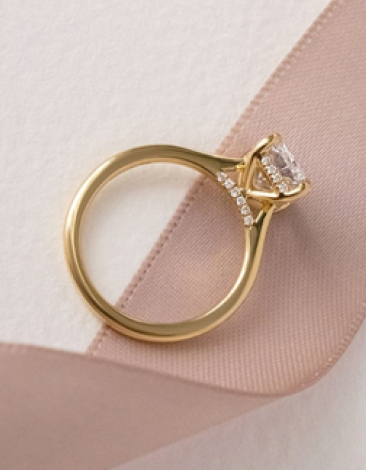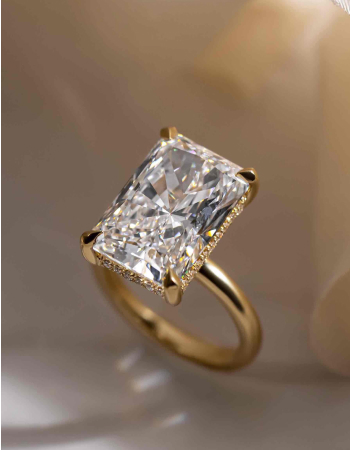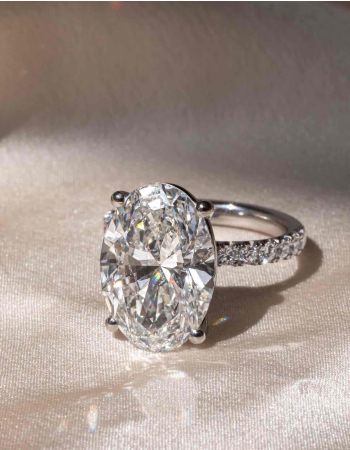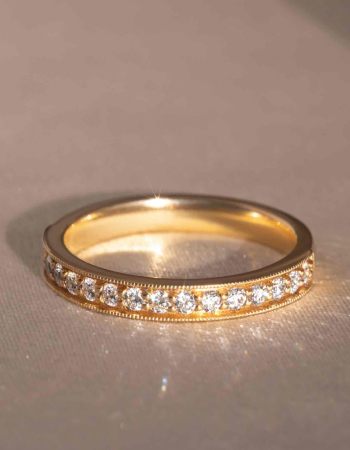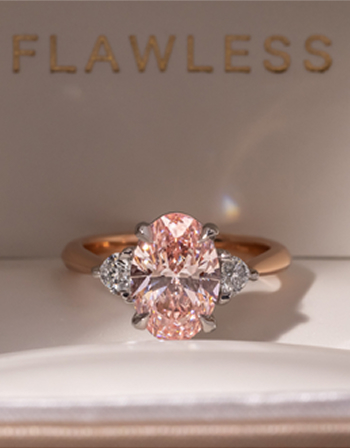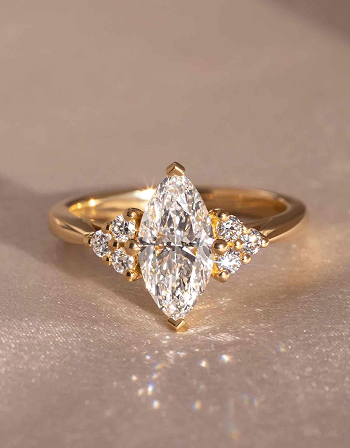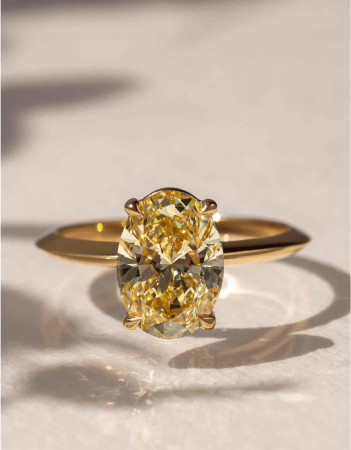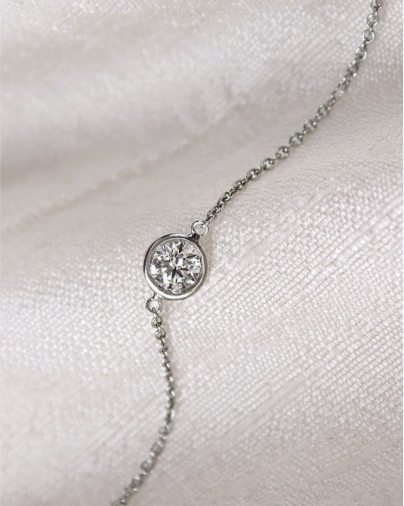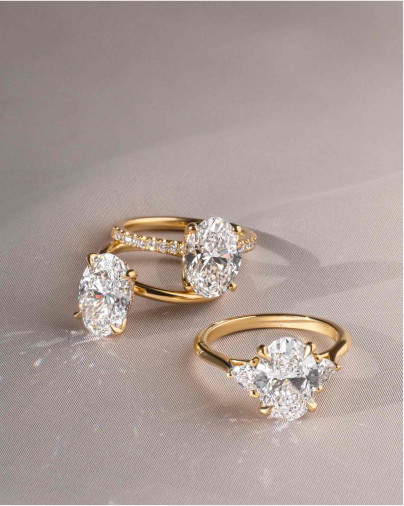

Lab Grown Diamonds UK - Sustainable and Ethical Choice
Crafted using cutting-edge technology, our UK Lab created Diamonds are IGI & GIA certified, sustainable, conflict-free, and perfect for modern luxury.
Discover premium lab grown diamonds, available in London, Manchester and across the country offering the same brilliance, durability, and purity as natural diamonds available at a more affordable price. Our lab grown diamond collection includes certified stones used for engagement rings and bespoke jewellery designs.
Shop Lab Grown Diamonds by Shape
What is a lab grown diamond?
A lab grown diamond, also called a Laboratory grown or manufactured diamond is a real diamond created in a controlled laboratory setting using advanced technology that replicates natural diamond formation. Lab created diamonds are becoming increasingly popular in the UK because they offer the same purity and quality as mined diamonds but at a more affordable price with a sustainable and ethical origin.
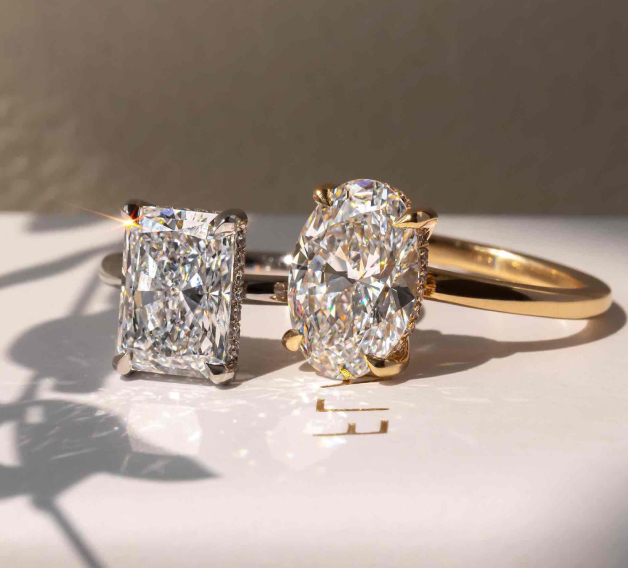

Are lab grown diamonds real?
Yes, laboratory grown diamonds are recognised by GIA/IGI and widely available across the UK and are completely real. They have the same chemical composition, crystal structure, and optical properties as natural diamonds, making them indistinguishable even under a jeweller’s loupe.
The key difference lies in their origin—while natural diamonds form deep within the earth over billions of years, lab-grown diamonds are created in high-tech laboratories using advanced processes like High Pressure High Temperature (HPHT) or Chemical Vapour Deposition(CVD).
These methods replicate the natural diamond-growing conditions, resulting in a gemstone that is just as brilliant, durable, and valuable—only more sustainable and ethical.
Read our guide on Lab grown diamonds for more details on the manufacturing process.
Built By Flawless
Lab Diamond Choice
A collection of rings, designed by our Hatton Garden Jewellers, that you have chosen over and over again as your heirloom. Our stunning engagement rings are all crafted with the finest sustainable diamonds, including lab-grown stones popular in the UK and utmost care by our team.
How Laboratory Grown Diamonds are made?
Lab grown or man made diamonds are created in high-tech laboratories using two advanced methods: High Pressure High Temperature (HPHT) and Chemical Vapour Deposition (CVD).
HPHT Method: This process mimics the earth’s natural diamond formation by exposing a tiny diamond seed to extreme heat (over 1,500°C) and high pressure (about 1.5 million PSI), causing carbon atoms to crystallise and grow into a diamond.
CVD Method: In this technique, a diamond seed is placed in a chamber filled with carbon-rich gas and exposed to high temperatures. The gas breaks down, and carbon atoms bond layer by layer, forming a pure diamond.
Both these processes are used by the UK jewellers who specialise in Lab grown diamonds.
How lab grown diamonds are made in the UK
Many lab diamond producers power HPHT and CVD processes with renewable energy, reducing carbon emissions and making each diamond a more sustainable alternative to mined stones.
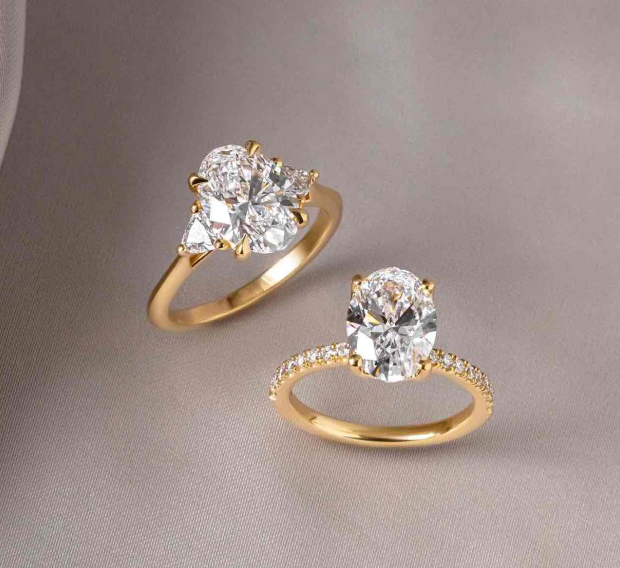

Popular & Trending Lab Grown Diamonds
Lab grown diamonds are rapidly gaining popularity, with certain shapes, sizes, and styles trending among modern buyers.
Round brilliant and oval-cut diamonds remain timeless favourites in the UK for their exceptional sparkle, while emerald and pear shapes are rising in demand for their elegant, vintage appeal in the jewellery trends.
Additionally, fancy-coloured synthetic diamonds, such as blue, pink, and yellow, are making waves, providing a unique and vibrant alternative to traditional white diamonds. Whether for engagement rings, fashion jewellery, or investment pieces, lab-grown diamonds continue to redefine luxury with sustainability and style.
Shop
Lab Diamond Trending
Our collection of jewellery features stunning engagement rings, wedding bands, pendants, bracelets and more, all crafted with the finest lab grown diamonds and utmost care.
Become a Diamond Expert
Cut
The cut of a diamond not only determines its shape, but also plays a crucial role in how well the diamond reflects light back to the viewer. A diamond that is cut well will appear highly brilliant and fiery, while one that is poorly cut can appear dull and lifeless, irrespective of its clarity or color.
Apart from exhibiting greater brilliance, a well-cut diamond also tends to appear larger than a diamond of the same carat weight that has been cut more deeply. An "ideal" diamond is one that has increased brilliance and diameter compared to more deeply-cut diamonds.
An Ideal Cut Diamond is a diamond that has been cut to ideal proportions and angles, and has excellent ratings for symmetry and polish. This type of diamond is perfectly proportioned to refract light, producing the fire and brilliance that is visible from the diamond's table and crown.
When light hits a diamond's surface, it can either reflect off the polished stone's table or enter the diamond. A well-cut diamond displays three different properties: brilliance, dispersion, and scintillation. The light that is reflected off the diamond is known as its brilliance. Some of the light rays that travel through a diamond are separated into flashes of color, known as dispersion. The result of this separation is known as fire. Scintillation refers to flashes of color that can be observed when a diamond is moved back and forth.
Speak with a specialist
Not sure which lab grown diamond suits you best?
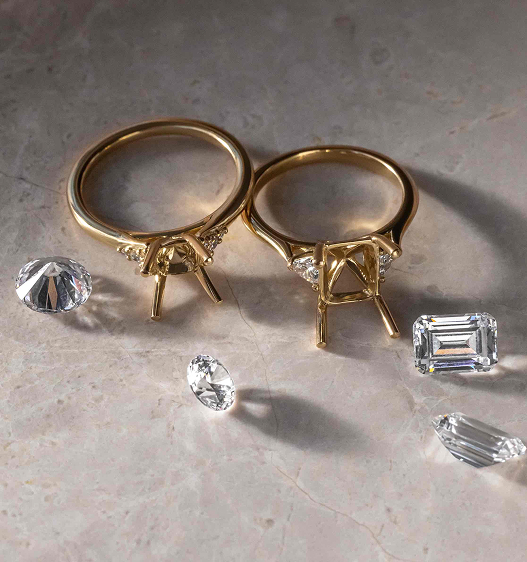
Speak with a specialist
Not sure which lab grown diamond suits you best?
Our experts are here to help. With in-depth knowledge of artificial diamond quality, cuts, and trends, they can guide you in finding a certified lab grown diamond in UK that perfectly matches your style, values, and budget.
Speak to one of our specialists today for a personalised consultation and make your choice with confidence.
Are Lab Grown Diamonds in the UK Sustainable?
Yes, lab made diamonds are a more sustainable alternative to mined diamonds. They require significantly fewer natural resources, eliminating the need for large-scale mining that can harm ecosystems. Produced in controlled laboratory environments using advanced technology, lab grown diamond reduce land disruption, water consumption, and carbon emissions. It has up to 40% less carbon footprint compared to mined diamonds.
Additionally, many lab grown diamond producers use renewable energy, further minimising their environmental impact. Choosing a laboratory grown diamond means embracing ethical luxury without compromising on quality or beauty.

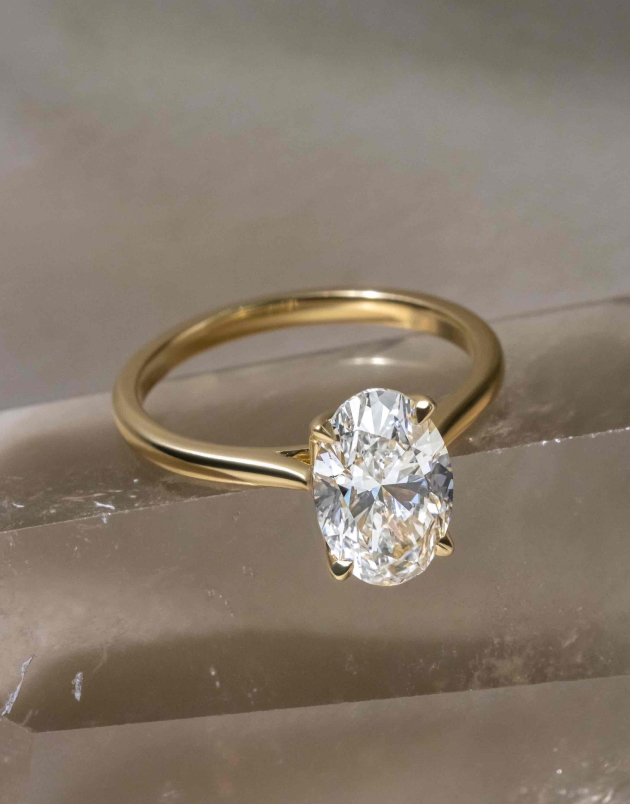
Are lab grown diamonds more ethical than earth mined diamonds?
Yes, cultured diamonds are widely considered a more ethical choice than mined diamonds. Unlike traditional diamond mining, which can involve environmental damage and unethical labor practices, lab grown diamonds are created in controlled environments without human exploitation or land disruption.
They are conflict-free, sustainably produced, and require significantly fewer natural resources. By choosing an engineered diamond, you can enjoy stunning brilliance with a clear conscience, knowing your gemstone is ethically and responsibly sourced.
Shop Lab Grown Diamond Jewellery
Our collection of lab-grown diamond jewellery features stunning pendants, bracelets and earrings, all crafted with the exquisite lab-grown diamonds and utmost care.
Why are lab grown diamonds so popular for diamond jewellery?
1. Ethical and Sustainable Choice
Unlike mined diamonds, lab created diamonds are created without the environmental and ethical concerns associated with traditional diamond mining. This makes them a preferred choice for those seeking conflict-free and eco-friendly jewellery in the UK.
2. Exceptional Quality and Beauty
Lab made diamonds possess the same brilliance, fire, and hardness (10 on the Moh’s scale) as natural diamonds. They are graded by the same gemological standards, ensuring that they are just as stunning and durable.
3. More Affordable in the UK
Lab diamonds are typically 30-40% less expensive than natural diamonds of the same quality. This allows buyers to choose larger or higher-quality stones within their budget.
4. Increasing Acceptance in the Jewellery Industry
Major jewellery brands and retailers in the UK now offer artificial diamonds, further validating their quality and desirability. Their growing presence in engagement rings, earrings, and necklaces has made them a mainstream choice.
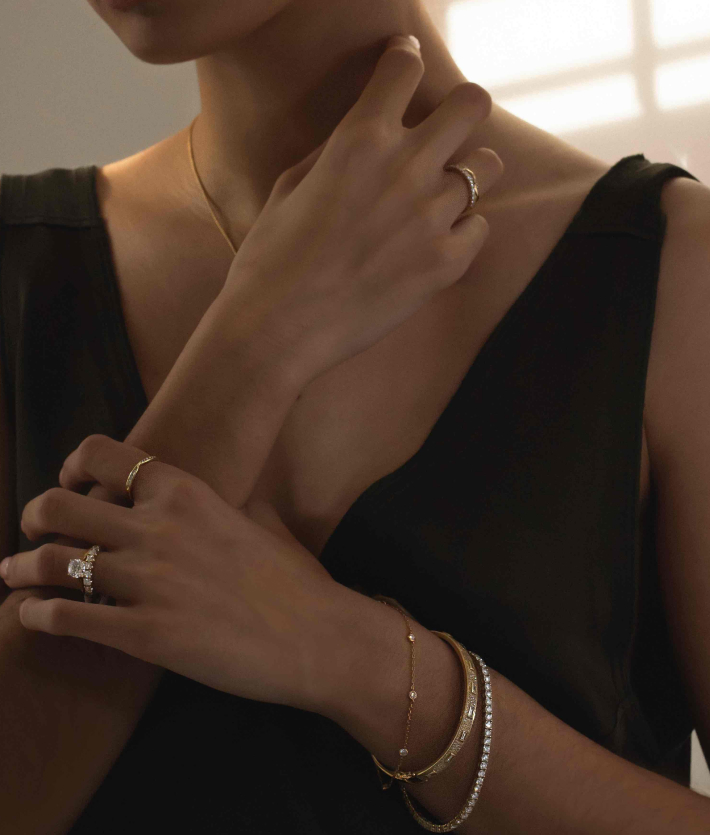
GIA & IGI Certified Lab Grown Diamonds UK
Lab grown diamond UK certified by GIA (Gemological Institute of America) and IGI (International Gemological Institute) ensure quality, authenticity, and transparency. These certifications assess key characteristics such as cut, colour, clarity, and carat weight, just like natural diamonds. An IGI or GIA certification guarantees that the diamond meets industry standards, giving buyers confidence in their purchase. All our diamonds are certified and authentic for buyers assurance.
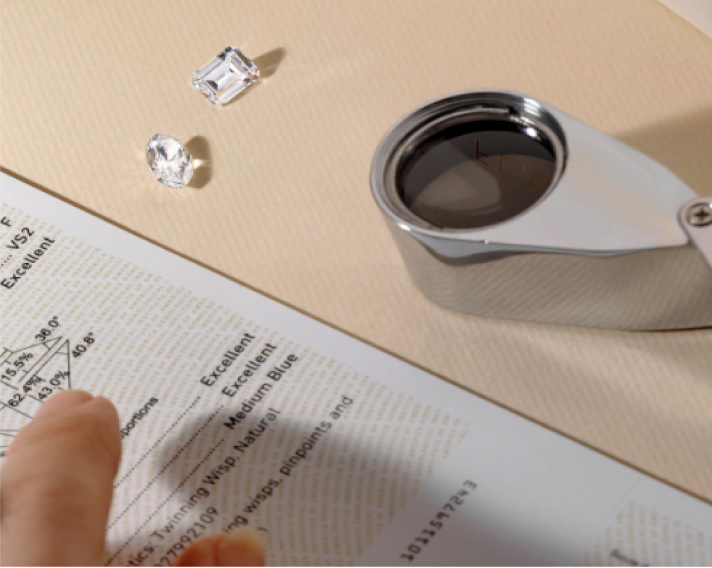
Lab grown diamond UK certified by GIA (Gemological Institute of America) and IGI (International Gemological Institute) ensure quality, authenticity, and transparency. These certifications assess key characteristics such as cut, colour, clarity, and carat weight, just like natural diamonds. An IGI or GIA certification guarantees that the diamond meets industry standards, giving buyers confidence in their purchase. All our diamonds are certified and authentic for buyers assurance.
Speak with a specialist.
Not sure which lab grown diamond suits you best?

